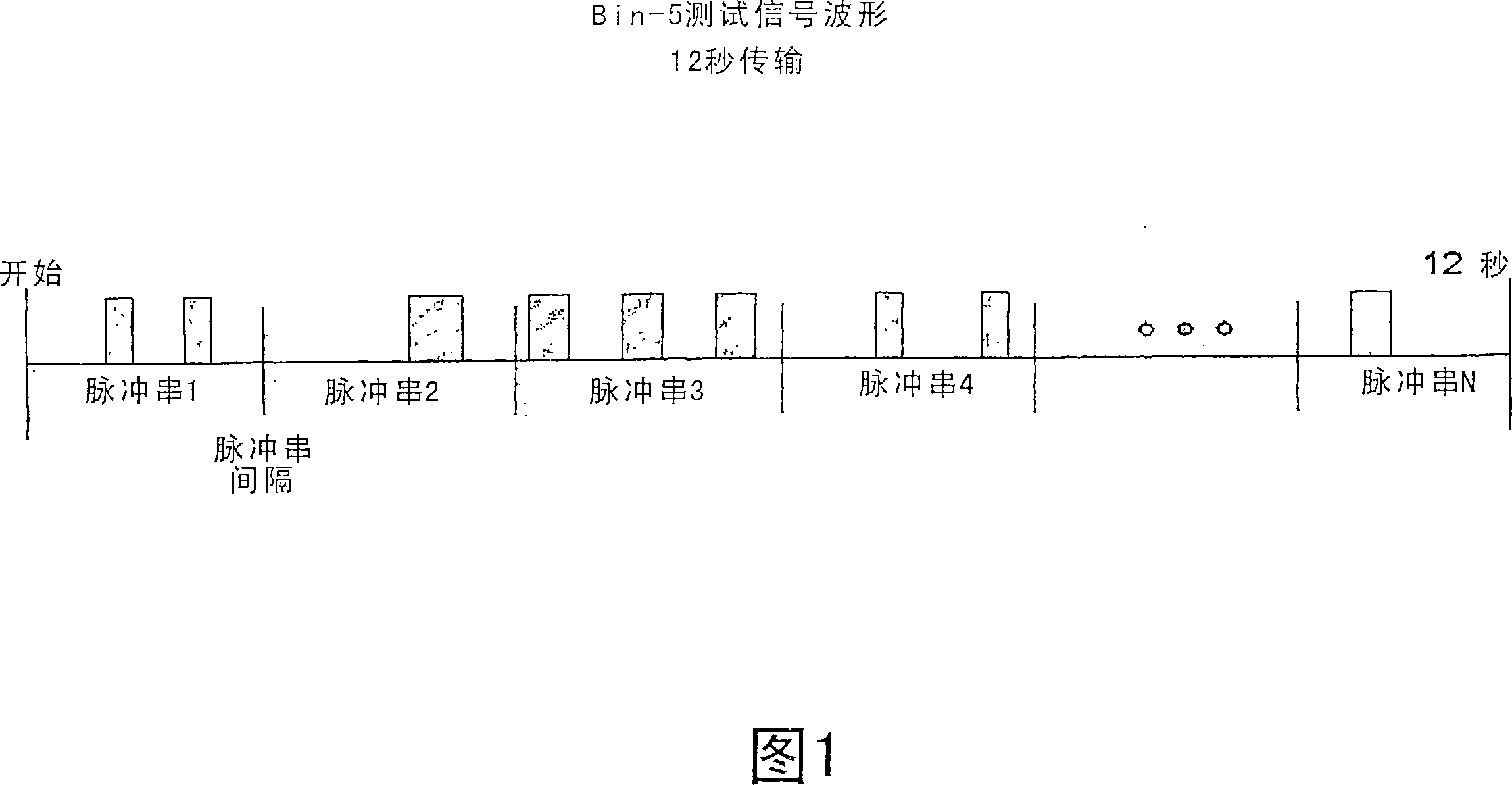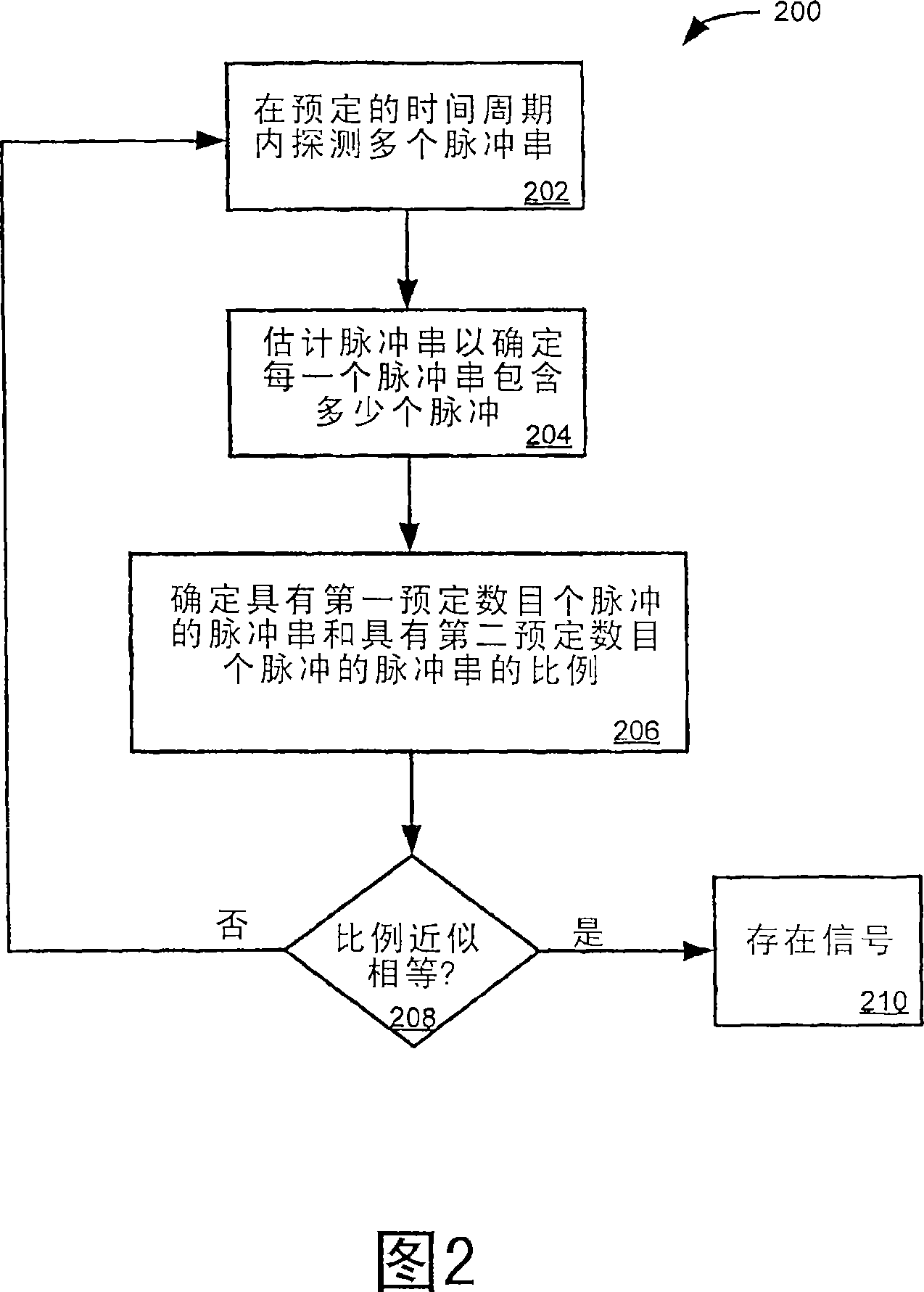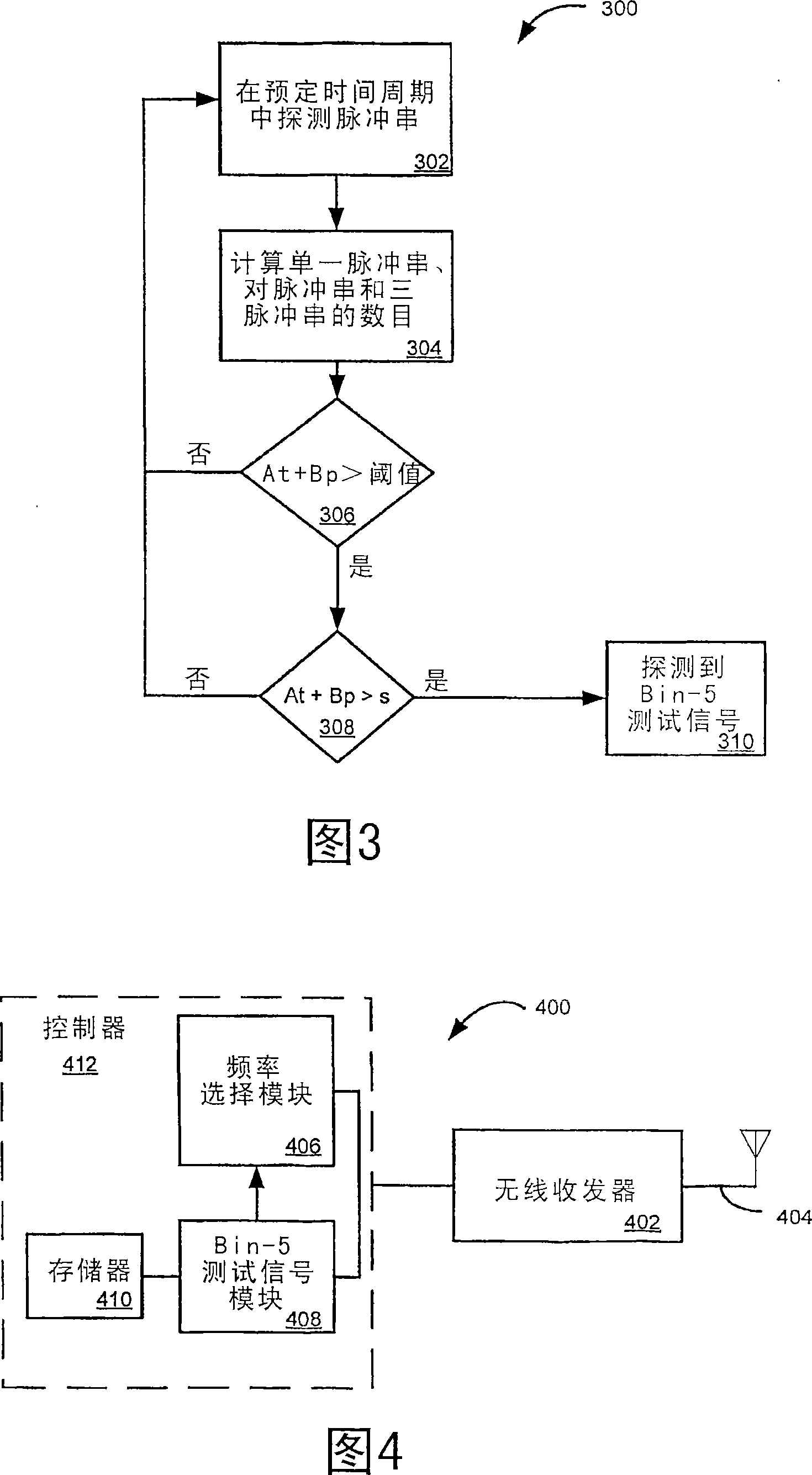Method and apparatus for detection of signal having random characteristics
A technology for testing signals and signals, used in multiplexing communications, radio wave measurement systems, transmission monitoring, etc., to solve problems such as network traffic error detection and impractical implementation of detection schemes
- Summary
- Abstract
- Description
- Claims
- Application Information
AI Technical Summary
Problems solved by technology
Method used
Image
Examples
Embodiment Construction
[0018] Throughout the specification, the preferred embodiments and examples shown should be considered as illustrations of the invention and not as limitations.
[0019] Wireless network traffic can result in bursts of energy (eg, collisions from transmitted packets) that cannot be distinguished from a single-pulse Bin-5 test signal burst (under currently existing receiver hardware). However, it is the object of the present invention to classify wireless Network traffic is separated from Bin-5 test signal transmissions. For the Bin-5 test signal, since the number of pulses in each burst is chosen randomly, the ratios of singles, pairs and triples are approximately 1:1:1. Approximately or approximately equal to 1:1:1 means that the single, pair and triple ratios are at least less than 8:4:1, preferably less than 4:2:1. Although the present invention has been described in the context of Bin-5 test signals containing single, pair and triple bursts, the present invention is suit...
PUM
 Login to View More
Login to View More Abstract
Description
Claims
Application Information
 Login to View More
Login to View More - R&D
- Intellectual Property
- Life Sciences
- Materials
- Tech Scout
- Unparalleled Data Quality
- Higher Quality Content
- 60% Fewer Hallucinations
Browse by: Latest US Patents, China's latest patents, Technical Efficacy Thesaurus, Application Domain, Technology Topic, Popular Technical Reports.
© 2025 PatSnap. All rights reserved.Legal|Privacy policy|Modern Slavery Act Transparency Statement|Sitemap|About US| Contact US: help@patsnap.com



